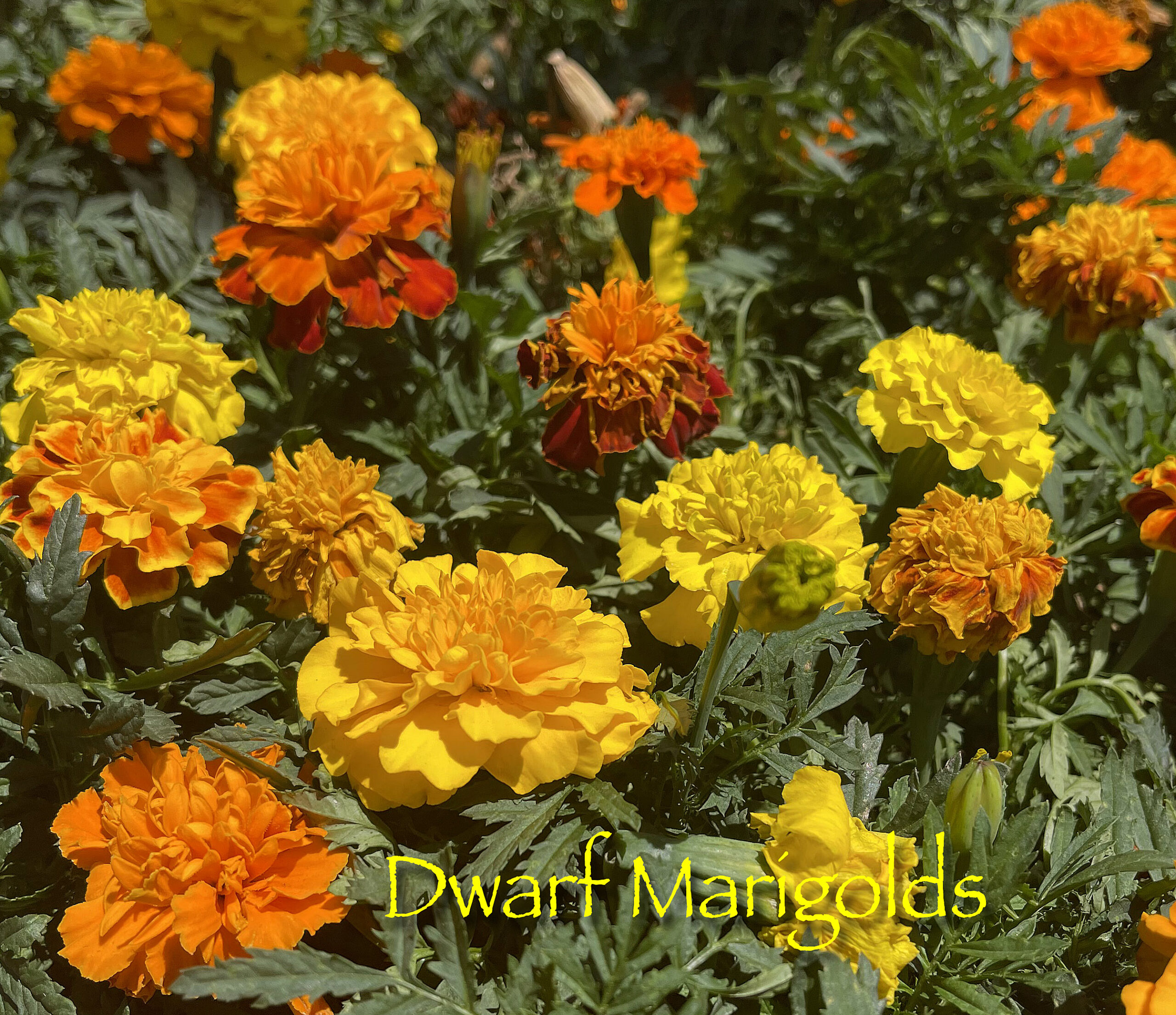
Question:
My Dwarf Marigolds, planted in mixed containers, are having a problem. Some of the plants thrive while others struggle. I've had this problem off and on over the past several years. They wither and die within a couple of weeks for no apparent reason. The other plants are not affected. The containers are next to one another and receive the same care and exposure. What do I need to do to prevent this from happening?Answer:
- Marigolds naturally form a very dense root ball of white, fibrous roots at an early age, so they'll quickly fill the growing space in a container or pack.
- This is beneficial as gardeners can easily remove the plants from color packs without disturbing them. But, it's sometimes difficult for water to penetrate the roots because of the thick matting and quickly draining soil.
- Water rolls around the roots resulting in water stress and the random failure of the plants. This can also be a problem with Pansies and Violas. Besides the sun, wind significantly contributes to water loss problems as the rate of transpiration and evaporation increases with windy conditions.
- You avoid this by first thoroughly watering the plants before transplanting.
- This also holds with landscape trees, shrubs, and ground covers during summer, regardless of the container size. The roots of the original plant(s) must go into their new location moist.
- The rate or speed of the decline depends on the location and exposure to the elements.
- Next, once the plants are removed from the container/color packs, you need to break the circular, square, or round pattern of the mass of roots. Many gardening books refer to this as scoring the root ball.
- You can pull at the outer roots with your fingers, slice them with a knife or use the blade on a pair of hand shears before tucking them into their new home.
- You avoid this problem in the future by simply changing the transplanting technique.
Question:
I removed my lawn and replaced it with California Natives and some water-wise plants. They have been in for two years and are doing very well. I'm very pleased. Do you know if they have any special fertilizer requirements?Answer:
- Native plants have no special fertilizer requirements as they're not heavy feeders.
- True California Natives are best fed in November, just before the rains, while the rest are fed in early March before the flush of new growth.
- I'd take the plant list to your favorite garden center and have the nursery professional advise you as to which time period is best for each plant. I'd use a general organic fertilizer like EB Stone or Dr. Earth Organic All Purpose Fertilizer. One application is all that's necessary per year.
